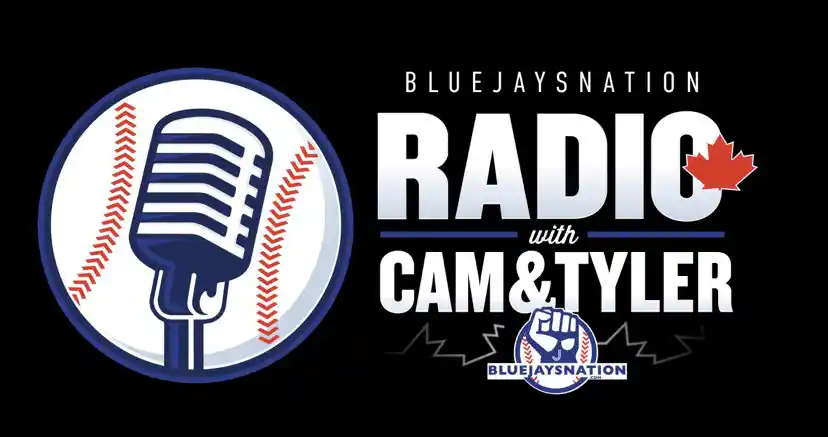No, Really, What Was With Those AP Payroll Figures?

If you’re looking for an answer to the question posed by the title of this post, I should tell you right now that I don’t have one. If you’re looking for a mini mystery — or, at the very least, the tale of me being confused and possibly missing something obvious — then you’re in the right place!
Early last week I wrote about the Associated Press’s MLB Opening Day payroll numbers, and how they sure looked funny when it came to your Toronto Blue Jays. There are plenty of sites out there that keep track of these things, and the one I find that I use the most — the Baseball Prospectus-owned Cot’s Baseball Contracts — totals the Jays’ salaries currently on the books at $163 million.
That means their payroll ranks as the 11th highest in baseball — though it’s actually just $3 million short of sliding in just behind the Cubs for seventh-highest. Their payroll looks very healthy, in other words. Whereas the AP’s figures ranked them 15th, behind the small market Royals, with a total of just $144 million on the books.
Something clearly was amiss, and I did my best to wave away the lower number, ripe as it is for squids to hold up as evidence of CHAPEFUCKINGROGERSwahhheeeheewahhhaaallgghh. Or something similarly inchoate.
The salaries listed at Cot’s are correct. Of that I’m confident. And for a while I thought, thanks to some help from reader Ray Slattery, that the AP ones might actually be as well.
How could that be?
Our theory was that these might be the numbers teams are submitting the the league for Luxury Tax purposes, which are different than the straight-up “real” salaries being paid. Luxury tax numbers are based on the average annual values (AAV) of contracts, not the specific salary for any given year.
The Blue Jays have several back-loaded contracts, and figuring that this might go a long way toward solving the mystery of the missing $19 million, I tallied up the difference between the AAVs and the actual salaries for all the Blue Jays on multi-year deals:
| Name | Contract (Yr/$) | AAV | 2017 Salary | Difference |
| Martin, Russell | 5/$82M | $16.4M | $20M | $3.6M |
| Tulowizki, Troy | 10/$157.75M | $15.775M | $20M | $4.225M |
| Donaldson, Josh | 2/$28.65M | $14.325 | $17M | $2.675 |
| Estrada, Marco | 2/$26M | $13M | $14M | $1M |
| Liriano, Francisco | 3/$39M | $13M | $13M | (0) |
| Happ, J.A. | 3/$36M | $11M | $12M | $1M |
| Morales, Kendrys | 3/$33M | $11M | $10M | ($1M) |
| Pearce, Steve | 2/$12.5M | $6.25M | $6.25M | (0) |
| Smoak, Justin | 2/$8.5M | $4.25M | $4.125M | $0.125M |
| Grilli, Jason | 2/$8M | $4M | $3M | ($1M) |
| Gurriel, Lourdes | 7/$22M | $3.143M | $1.0285 | ($2.1M) |
| Total | $7.525M |
That’s a significant difference! And if you’re only counting players on the 25-man roster, you can remove Gurriel’s deal from the list and close the gap even more. But what about the rest of it?
An AP story from back in December listed the submitted Luxury Tax numbers for each team, explaining that “figures are for 40-man rosters and include the average annual values of contracts and $12,953,201 per club for benefits and extended benefits,” and adding this: “Salaries include earned incentive bonuses, non-cash compensation, buyouts of unexercised options and cash transactions. In some cases, parts of salaries that are deferred are discounted to reflect present-day values.”
Could it be that the Jays have been deferring big chunks of players’ salaries far more than anyone has suspected? Might that explain the difference?
So far as I could tell, no. There are no references to big deferrals in the Russell Martin deal. And though, at the time Troy Tulowitzki signed the contract he’s currently on, the Denver Post noted that “in 2019 he earns $20 million of which $5 million is deferred with 3% compounded interest,” there isn’t anything to indicate deferrals in 2017, and certainly none of the magnitude to make up the difference of around $10 between the AP’s figure and the AAV-adjusted Cot’s figure.
It was only at this point that I finally decided to actually look at some other teams. Surely the Jays couldn’t be the only club with back-loaded contracts dragging down their luxury tax number, so I figured I’d better look into it. And rather quickly I noticed something: the AP number for the Detroit Tigers’ payroll wasn’t just close to the number at Cot’s, it was the exact same.
How could that be? And, more importantly, how could it be the Tigers’ luxury tax number, when Cot’s tracks luxury tax numbers for clubs that are required to pay them, and calculates Detroit’s as quite a bit higher? (Specifically, Cot’s has the Tigers’ luxury tax number at $224,114,886.)
It turns out Detroit wasn’t the only club with an AP payroll number exactly the same as Cot’s — or essentially the same, as the $1 difference between listings for the A’s amounts to a rounding error — and the Jays weren’t the only ones with a major discrepancy. The AP’s number for the Red Sox was $18 million lower than the one at Cot’s, though there’s only a $4 million difference between the AP’s number and the luxury tax number at Cot’s. The Dodgers have a discrepancy of $15 million between the two figures (and their luxury tax number is right in between the two), and the Phillies are $11 million higher per the AP than Cot’s.
Even in the spots where the discrepancies aren’t so large, there’s almost no agreement between the two lists:
| Team | Cot’s Payroll | AP Payroll | Difference |
| Arizona Diamondbacks | $93,120,200 | $93,180,499 | $60,299 |
| Atlanta Braves | $122,603,054 | $126,079,524 | $3,476,470 |
| Baltimore Orioles | $164,326,172 | $164,261,299 | ($64,873) |
| Boston Red Sox | $197,041,179 | $178,818,052 | ($18,223,127) |
| Chicago Cubs | $172,199,881 | $176,872,312 | $4,672,431 |
| Chicago White Sox | $97,823,271 | $100,054,937 | $2,231,666 |
| Cincinnati Reds | $95,375,786 | $93,026,286 | ($2,349,500) |
| Cleveland Indians | $124,116,166 | $125,808,029 | $1,691,863 |
| Colorado Rockies | $127,828,571 | $127,943,571 | $115,000 |
| Detroit Tigers | $199,750,600 | $199,750,600 | $0 |
| Houston Astros | $124,343,900 | $122,407,233 | ($1,936,667) |
| Kansas City Royals | $143,005,817 | $145,925,250 | $2,919,433 |
| Los Angeles Angels | $166,375,833 | $164,050,833 | ($2,325,000) |
| Los Angeles Dodgers | $241,149,167 | $225,553,087 | ($15,596,080) |
| Miami Marlins | $115,406,101 | $120,191,297 | $4,785,196 |
| Milwaukee Brewers | $63,061,300 | $60,810,090 | ($2,251,210) |
| Minnesota Twins | $108,102,500 | $104,837,500 | ($3,265,000) |
| New York Mets | $154,437,460 | $155,641,379 | $1,203,919 |
| New York Yankees | $196,389,700 | $195,282,058 | ($1,107,642) |
| Oakland Athletics | $81,738,333 | $81,738,334 | $1 |
| Philadelphia Phillies | $100,041,000 | $111,868,378 | $11,827,378 |
| Pittsburgh Pirates | $95,807,004 | $91,499,172 | ($4,307,832) |
| San Diego Padres | $69,624,400 | $61,411,789 | ($8,212,611) |
| San Francisco Giants | $180,822,611 | $181,514,431 | $691,820 |
| Seattle Mariners | $154,318,843 | $154,157,720 | ($161,123) |
| St. Louis Cardinals | $148,152,933 | $150,380,000 | $2,227,067 |
| Tampa Bay Rays | $70,064,700 | $71,351,611 | $1,286,911 |
| Texas Rangers | $165,348,063 | $173,114,730 | $7,766,667 |
| Toronto Blue Jays | $163,381,937 | $143,941,100 | ($19,440,837) |
| Washington Nationals | $164,335,444 | $164,591,088 | $255,644 |
According to multiple places that have published this information (though I can’t find this exact wording on the AP’s own website itself), here’s how these numbers were compiled:
Figures were obtained by The Associated Press from management and player sources and include salaries and pro-rated shares of signing bonuses for players on the 25-man active roster, disabled lists and New York Mets pitcher Jeurys Familia, who is serving a 15-game suspension. In some cases, parts of salaries deferred without interest are discounted to reflect present-day values. Adjustments includes cash transactions in trades, signing bonuses that are responsibility of club that agreed to contract, option buyouts and termination pay for released players.
That all sounds very fancy and official, but I have a very hard time reconciling the notion that there are all sorts of adjustments and pro-rated bonus shares and deferrals and all that going into the calculation, and the fact that the Tigers and A’s end up with the exact same number to the very dollar as we see on Cot’s, while 28 other teams do not.
Cot’s is showing its work and using the same methodology for each team. Is the AP? On the first of those points they are certainly not. On the second, I’m not exactly confident. Like… are those “management sources” providing the club’s version of a payroll number, and meaning that each team is a little bit different? Do the Tigers and A’s alone refuse to do deferrals or signing bonuses and all these other things, and that’s why their numbers line up with Cot’s while nobody else’s do?
What am I missing? Or what is the AP missing?
Until I get a satisfactory answer to one of those questions, I have no confidence in these AP numbers. The Jays may not spend the way we’d like them to — they should at least be spending up to the built-in excuse for curbing their expenditures that is the luxury tax threshold — but don’t let anybody tell you they’re behind the fucking Royals. At least not until we know more.
Recent articles from Andrew Stoeten





